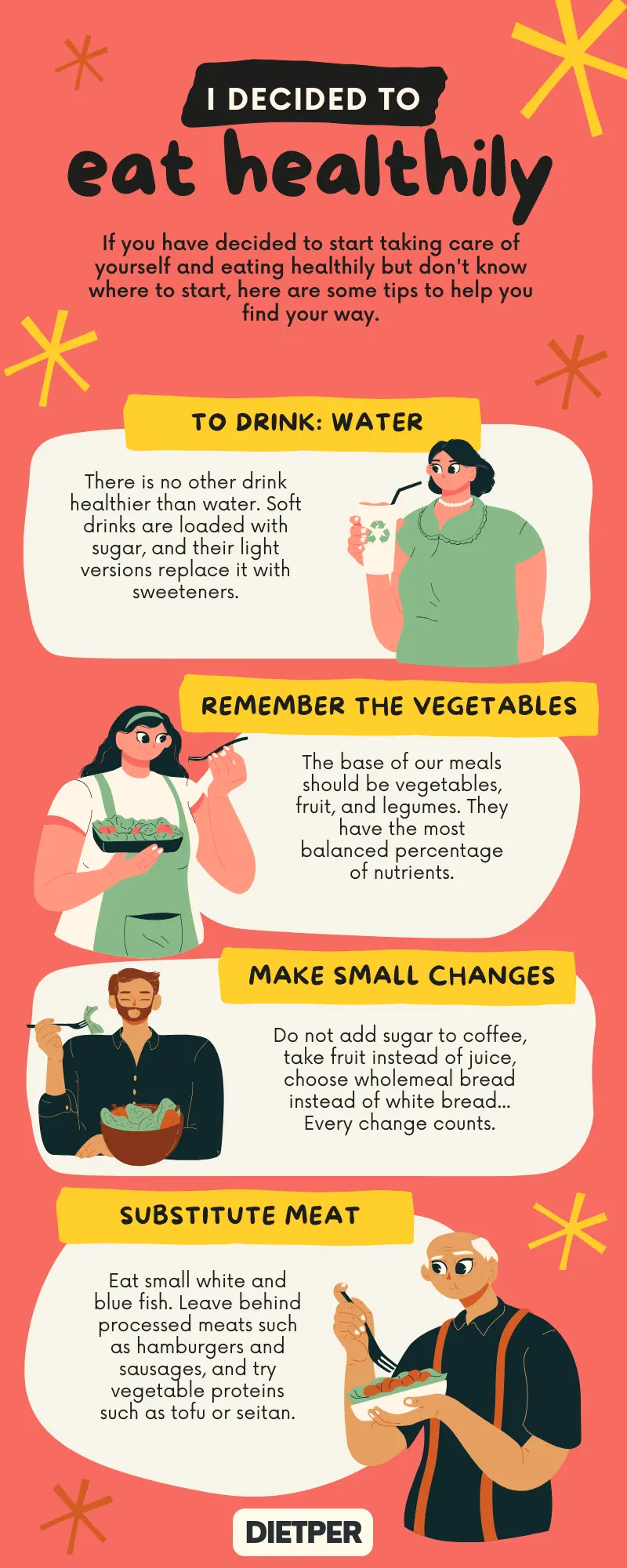Clean Bulking Diet Plan: Lean Muscle Gain Strategy
Clean Bulking Diet Plan: Build Muscle & Stay Lean | Expert Tips

Clean Bulking Diet Plan: Bulking up requires more than just lifting weights and working out. It requires a specific diet plan that will provide your body with the necessary nutrients to build muscle mass. A clean bulking diet is a great way to achieve this goal. It is not about indulging in junk food or overeating, but rather a well-structured approach to food that will help you gain muscle without putting on too much fat. A clean bulking diet involves eating clean, nutrient-dense foods that will help you achieve your goals.
Definition of Clean Bulking Diet Plan
Clean bulking is a methodical approach to eating that promotes muscle and strength gains while keeping fat gain in check. The fundamental principles of a clean bulking diet include:
- Opting for whole, nutrient-rich foods such as:
– Protein sources like chicken, fish, steak, pork, turkey, and eggs
– Carb sources such as rice, potatoes, quinoa, bananas, and apples
– Fat sources like nuts, seeds, olive oil, and avocados
- Steering clear of or limiting highly processed, high-calorie “junk” foods such as added sugars, fried items, and heavily processed snacks.
- Maintaining a moderate calorie surplus, usually in the range of 300-500 calories above your maintenance level, to support muscle growth without excessive fat accumulation.
- Ensuring sufficient protein intake, typically around 0.7-1 gram per pound of body weight, to enhance muscle protein synthesis.
- Incorporating resistance training and progressive overload to promote muscle growth in conjunction with the calorie surplus.
Clean bulking emphasizes nutrient-dense whole foods and a controlled calorie surplus, as opposed to a “dirty bulk,” which prioritizes maximizing calorie intake regardless of food quality. This approach facilitates sustainable muscle growth with minimal fat gain.
Check out our comprehensive Clean Bulking Meal Plan for more guidance.
Foods to Include Clean Bulking Diet Plan
Protein Sources:
- Chicken breasts
- Lean ground beef
- Salmon
- Tuna
- Turkey breast
- Greek yogurt
- Cottage cheese
- Protein powder
- Beef jerky
Carbohydrate Sources:
- Oats
- Quinoa
- Brown rice
- Wild rice
- Whole-wheat bread
- Whole-wheat pasta
- Sweet potatoes
- Regular potatoes
- Beans
- Lentils
Fruits and Vegetables:
- Apples
- Bananas
- Berries
- Carrots
- Celery
- Grapes
- Lettuce
- Tomatoes
- Broccoli
- Brussels sprouts
- Cabbage
- Cauliflower
- Green beans
Healthy Fats:
- Avocados
- Olive oil
- Nut butters
- Fish
- Nuts
- Seeds
Other Foods:
- Whole grains
- Legumes
- Lean meats like turkey, steak, and pork
- Eggs
- A variety of vegetables like spinach, kale, and peppers
Incorporating these foods into your clean bulking diet plan ensures a balanced intake of macronutrients (protein, carbohydrates, and fats) as well as essential vitamins and minerals to support muscle growth and overall well-being.
Learn more about nutrient-dense foods that support clean bulking here.
Foods to Avoid Clean Bulking Diet Plan
To maintain the focus on nutrient-dense options and prevent excessive fat gain in a clean bulking diet plan, it’s essential to avoid certain foods. Here are some foods to steer clear of:
- Junk food: Limit or avoid high-calorie, low-nutrient options like chips, cookies, cake, and candy.
- Highly processed foods: Minimize intake of heavily processed items such as chips, crackers, pasta, bread, cured meats, and cereals.
- Foods with added sugars: Restrict consumption of foods containing added sugars, including sugar-sweetened beverages, salad dressings, and processed carbohydrates.
- Foods with added fats: Avoid foods with fats added during processing, such as processed peanut butter, salad dressings, and cookies.
By avoiding these types of foods, individuals can optimize their nutrient intake, support muscle growth, and minimize fat accumulation while following a clean bulking diet plan.
Caloric Surplus for Clean Bulking: Ideal Range of 300-500 Calories Per Day
Importance of Caloric Surplus in Clean Bulking
- Muscle Growth: A caloric surplus is essential for providing the extra energy needed to support muscle growth. When combined with resistance training, this surplus helps create an environment conducive to muscle protein synthesis and hypertrophy.
- Energy Balance: By consuming slightly more calories than the body expends, individuals ensure they have enough energy available for intense workouts and the muscle repair and growth processes that follow.
- Minimizing Fat Gain: Keeping the surplus within the range of 300-500 calories per day helps prevent excessive fat storage. This controlled approach allows for lean muscle gains while minimizing the risk of unwanted body fat accumulation.
Balancing Act for Optimal Results
- Nutrient-Dense Foods: Emphasizing nutrient-dense whole foods in the diet ensures that the surplus calories come from quality sources that support overall health and performance.
- Regular Monitoring: Regularly assessing progress, adjusting calorie intake as needed, and monitoring body composition changes can help individuals fine-tune their approach to stay within the optimal surplus range.
- Consistency and Patience: Building muscle takes time, and maintaining a consistent surplus within the recommended range, coupled with a structured training program, is key to achieving long-term muscle growth goals.
By understanding and implementing an ideal calorie surplus range of 300-500 calories per day in a clean bulking diet plan, individuals can effectively support muscle growth while keeping fat gain in check, ultimately leading to a successful and sustainable bulking phase.
Importance of Occasional Flexibility in the Clean Bulking Diet Plan
a clean bulking diet plan, occasional flexibility plays a crucial role in maintaining a positive relationship with food and avoiding negative psychological impacts. Here’s why flexibility is essential:
- Mental Well-being: Allowing occasional flexibility in the diet can prevent feelings of deprivation and restriction, which are common in rigid eating patterns. This flexibility can help individuals enjoy social gatherings, celebrations, or occasional treats without guilt, contributing to a healthier mindset around food.
- Sustainability: By incorporating occasional flexibility, individuals are more likely to adhere to their clean bulking diet plan in the long term. This sustainability is key for achieving lasting results and preventing burnout or disordered eating habits.
- Diverse Nutrient Intake: Flexibility allows for a more varied diet, ensuring individuals can meet their nutritional needs while enjoying a range of foods. This diversity can enhance overall health and well-being.
- Balanced Approach: Striking a balance between adherence to clean, nutrient-dense foods and occasional treats or discretionary calories promotes a healthy relationship with food. It prevents the diet from becoming overly restrictive and supports a more balanced approach to eating.
In short, incorporating occasional flexibility in a clean bulking diet plan is essential for mental well-being, sustainability, diverse nutrient intake, and maintaining a balanced approach to nutrition. By allowing room for flexibility, individuals can enjoy the process of clean bulking while fostering a positive relationship with food and avoiding negative psychological impacts.
Clean Bulking vs. Dirty Bulking: A Controlled Approach for Muscle Growth
Clean bulking and dirty bulking represent two distinct approaches to achieving muscle growth, each with its own set of characteristics and outcomes. Here is a differentiation between clean bulking and dirty bulking, highlighting the controlled approach of clean bulking to support muscle growth without excessive fat gain:
Clean Bulking:
- Healthy Eating: Clean bulking involves prioritizing nutrient-dense, whole foods in the diet, such as lean proteins, complex carbohydrates, and healthy fats.
- Controlled Caloric Surplus: This method focuses on maintaining a moderate calorie surplus of around 300-500 calories per day to support muscle growth while minimizing fat gain.
- Nutrient Quality: Emphasis is placed on consuming foods rich in essential nutrients to support overall health and optimize muscle-building processes.
- Lean Muscle Gain: Clean bulking aims to promote lean muscle gain by providing the body with the necessary nutrients for muscle repair and growth.
- Sustainability: By instilling healthier eating habits and focusing on nutrient-dense choices, clean bulking sets individuals up for long-term success and easier maintenance post-bulk.
Dirty Bulking:
- Junk Food Consumption: Dirty bulking involves consuming calorie-dense, often processed, and unhealthy foods to achieve a high caloric surplus quickly.
- Less Concern for Fat Gain: This method is characterized by a higher caloric surplus without much consideration for the quality of the calories consumed, leading to potential fat accumulation.
- Simplicity vs. Nutrient Density: Dirty bulking is often chosen for its simplicity and convenience, prioritizing calorie intake over nutrient quality.
- Rapid Weight Gain: While dirty bulking can lead to rapid weight gain, a significant portion of this gain may come from fat rather than lean muscle mass.
- Short-Term Focus: Dirty bulking may offer quicker weight gain results but can be less sustainable and may lead to challenges in transitioning to a maintenance phase.
In short, clean bulking stands out for its controlled and nutrient-dense approach, focusing on quality calories to support muscle growth while minimizing fat gain. This method prioritizes long-term health and sustainable muscle gain, making it a preferred choice for individuals looking to achieve muscle growth effectively and maintain a positive relationship with food and nutrition.
Explore our Resistance Training Guide for effective muscle-building strategies.
Common Mistakes to Avoid in Clean Bulking
During a clean bulking phase, it’s crucial to steer clear of common mistakes that can hinder progress and impact results. Two key areas where individuals often falter are in cardio practices and resistance training. Let’s address these mistakes and emphasize the importance of purposeful resistance training during clean bulking:
Mistake 1: Incorrect Cardio Practices
One prevalent mistake during clean bulking is approaching cardio solely as a means to burn calories, which can conflict with the goal of being in a calorie surplus. Instead, cardio should be viewed as a tool to maintain cardiovascular health rather than a primary calorie-burning activity during a bulk. The focus should be on smart, specific programming that supports cardiovascular function without significantly increasing calorie expenditure. Long-duration cardio sessions are often unnecessary and can make maintaining a surplus more challenging.
Mistake 2: Inadequate Resistance Training
Another common misstep is overtraining or not structuring resistance training effectively during a clean bulk. The goal of resistance training in a bulking phase is to provide sufficient stimulus for muscular adaptations, not to simply maximize volume. Research suggests that around 10-20 sets per muscle group per week are generally sufficient for muscle growth. It’s essential to find the right balance between training volume, frequency, and rest days to optimize muscle development and recovery.
Importance of Purposeful Resistance Training
Purposeful resistance training is a cornerstone of clean bulking, as it stimulates muscle growth and strength gains. By focusing on quality over quantity, individuals can ensure they are providing the necessary stimulus for muscle hypertrophy without overtaxing their bodies. Structuring resistance training intelligently, with adequate rest and recovery periods, is key to maximizing muscle growth while minimizing the risk of overtraining.
In short, avoiding mistakes like incorrect cardio practices and ensuring purposeful resistance training are vital components of a successful clean bulking strategy. By addressing these common pitfalls and emphasizing the importance of structured training, individuals can optimize their muscle-building efforts and achieve their bulking goals effectively.
Monitoring Progress in Clean Bulking: Aim for Gradual Gains with Balanced Approach
When embarking on a clean bulking journey, it’s essential to monitor progress carefully to ensure you’re achieving your goals in a sustainable manner. Here’s a guide on how to approach progress monitoring and the importance of balancing clean foods with occasional treats:
Gradual Weight Gain 0.5-1 lb per Week
A key indicator of progress during clean bulking is the rate of weight gain. Experts recommend aiming for a gradual increase of 0.5-1 lb per week. This moderate pace allows for lean muscle growth while minimizing excessive fat accumulation. By monitoring your weight consistently, you can make adjustments to your calorie intake as needed to stay within this optimal range. Rapid weight gain above 1 lb per week is often a sign of excessive fat gain, which should be avoided during a clean bulk.

Balancing Clean Foods and Occasional Treats
While the foundation of a clean bulking diet should be nutrient-dense, whole foods, it’s important to allow for some flexibility and occasional treats. Maintaining a rigid, restrictive approach can be challenging to sustain in the long run and may negatively impact your relationship with food. Aim to dedicate around 80-90% of your calorie intake to clean, unprocessed foods that provide essential nutrients to support muscle growth.
The remaining 10-20% can be reserved for occasional indulgences, such as your favorite snacks or meals, to prevent feelings of deprivation and promote a balanced, sustainable approach. This flexible approach helps you meet your calorie and nutrient needs for muscle building while also satisfying cravings and maintaining a positive mindset. It’s about finding the right balance between discipline and enjoyment to ensure long-term success.
By monitoring your weight gain and maintaining a balanced approach between clean foods and occasional treats, you can effectively track your progress and make adjustments as needed during your clean bulking phase. This measured approach supports lean muscle growth while preventing excessive fat accumulation, leading to a more successful and sustainable bulking experience.
Discover effective ways to monitor your progress during clean bulking.
Top 6 FAQs about the Clean Bulking Diet Plan
What is clean bulking diet plan and why is it important?
Final Words
In conclusion, adopting a Clean Bulking Diet Plan offers a strategic approach to building lean muscle mass while minimizing fat gain. By focusing on nutrient-dense whole foods, maintaining a moderate calorie surplus, and avoiding processed foods and added sugars, individuals can support their muscle growth goals effectively.
It is crucial to understand the distinction between clean bulking and dirty bulking, with clean bulking emphasizing a controlled and sustainable approach to achieving muscle gains. By incorporating foods like lean proteins, complex carbohydrates, healthy fats, and a variety of fruits and vegetables, individuals can optimize their nutrition for muscle growth and overall health.
Additionally, monitoring progress through gradual weight gain and incorporating occasional flexibility in the diet can help individuals stay on track and maintain a positive relationship with food. By avoiding common mistakes and staying consistent with purposeful resistance training, individuals can maximize the benefits of a Clean Bulking Diet Plan.

- Muscle & Fitness – Ultimate Clean Bulk Meal Plan
- Bodybuilding.com – The Clean Bulk: A New Approach To Adding Offseason Muscle:
- Clean Bulking Plan PDF Eating Dieting – Scribd
- Bulking Diet Plan PDF Meal Food And Drink Preparation – Scribd








